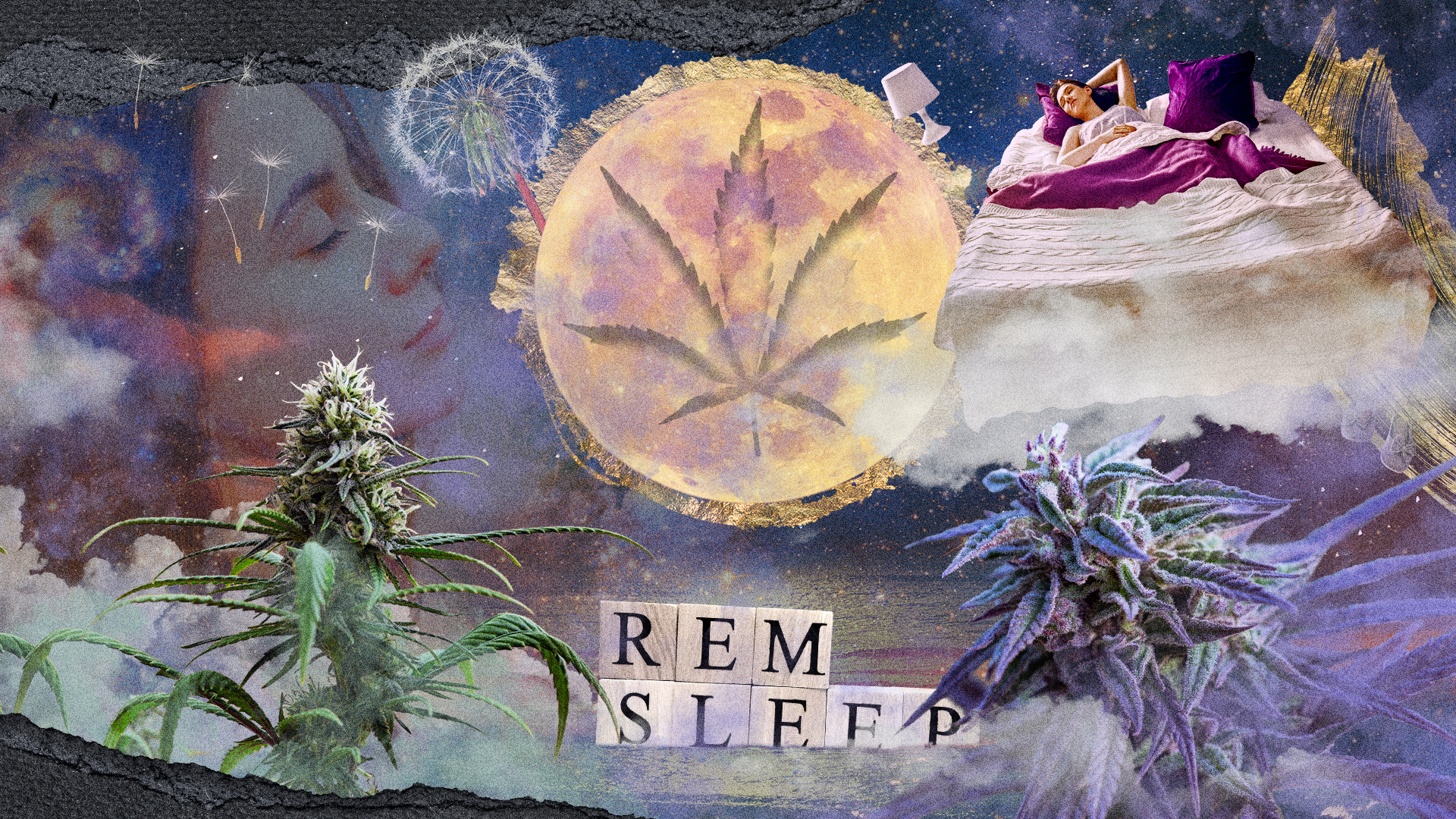For many Americans, cannabis is more than a nightly routine. It’s a sleep aid and chronic pain reliever. Historically, users also have anecdotally shared that cannabis seems to affect their dreams as well. This article explores the intriguing ways cannabis might influence our dream world, dispelling misconceptions about the relationship between cannabis and sleep and shedding light on a topic that blends science with the mysteries of sleep.
What Happens When You Sleep High?
Cannabis, with its mind-altering properties, casts a unique effect on our dream landscapes. Users frequently report distinct changes in their dreaming experiences, often linked to their impairment from cannabis use. However, according to the National Institute on Drug Abuse (NIDA), regular use leads to an increased risk of unexpected side effects: a noticeable decrease or complete cessation of dreams.
In addition to helping you fall asleep quicker, cannabis has the potential to modify your sleep architecture, or how long you spend in each sleep stage. Short-term cannabis use seems to increase the time spent in deep sleep. On the other hand, cannabinoids diminish the time spent in rapid eye movement (REM) sleep, a stage associated with dreaming, emotional processing, and memory retention.
The reduction in REM sleep might help medical cannabis patients — such as those experiencing insomnia or PTSD nightmares — get better sleep. However, other cannabinoids might interact with receptors in the endocannabinoid system to suppress some aspects of dreaming. On the flip side, there are those who, upon quitting cannabis, encounter a sudden increase in dream intensity.
These individuals often describe their dreams as unusually vivid or even hyperrealistic. This stark contrast between dream suppression and vivid dreaming post-cessation highlights cannabis’s complex and intriguing influence on our subconscious minds and the mysterious world of dreams.
Understanding Dreams and REM Sleep
Dreams, those intriguing and often baffling stories our minds tell at night, mostly unfold during REM (Rapid Eye Movement) sleep. This is a deep phase of sleep where our brain activity ramps up, painting the canvas of our subconscious. In this stage, our eyes dart rapidly behind closed lids, a hallmark of intense dreaming.
However, the true purpose of these dreams remains a subject of debate and fascination. Some experts believe dreams are vital for processing emotions or consolidating memories. They might be our brain’s way of ‘cleaning house,’ making sense of daily experiences.
Others argue that dreams might not have a specific function, suggesting they are simply a byproduct of our brain’s complex workings during sleep.
This ongoing mystery about the role and significance of dreams provides a crucial context for understanding how the effects of cannabis may alter the very fabric of our dreamscapes.
Cannabis and REM Sleep: The Scientific Perspective
Research shows that (tetrahydrocannabinol) THC, a key component in cannabis, can affect REM sleep, where most dreaming occurs. Studies indicate that the psychoactive effects associated with high doses of THC may reduce the time spent in this sleep stage. This reduction could explain why some cannabis users experience fewer dreams.
As REM sleep is shortened, this phase’s vivid and often memorable dreams may become scarce. This effect on REM sleep also ties into dream recall. With less REM sleep, recalling dreams becomes harder, leading to the perception of fewer or no dreams. These findings offer a scientific lens to understand how cannabis might change our dream experiences.
Why You Should Get Your Medical Marijuana Card
Veriheal has satisfied millions of patients nationwide by giving them access to these benefits
- Larger purchase limits
- Peace of mind
- Enhanced legal protection
- Access to higher potency strains
- Save up to 25% on cannabis purchases
- Skip the line at the dispensary
The Debate: What Happens When You Sleep High?
The debate on whether cannabis stops dreams or simply affects their recall is ongoing. Some experts argue that cannabis users still dream but may not remember them due to various THC levels’ impact on memory. Others believe that the reduction in REM sleep disorders leads to fewer dreams.
This difference of opinion points to the complex relationship between cannabis, memory, and the dreaming process. The question remains: are cannabis users experiencing fewer dreams, or are they just unable to remember them?
This debate is crucial in understanding cannabis’s total impact on our sleep and subconscious mind.
Vivid Dreams and Cannabis Cessation
When individuals cease using cannabis, they often encounter a phenomenon known as “REM rebound.” This occurs when the body compensates for the reduced REM sleep experienced during cannabis use and subsequent withdrawal symptoms.
As a result, the REM stage intensifies, leading to more frequent and vivid dreams. These dreams can be strikingly clear, emotionally intense, or even unsettling.
People report an increase in vivid nightmares during this rebound phase, which can be quite jarring.
This sudden shift is thought to be the brain’s way of balancing out the reduced dream activity previously caused by cannabis. For those who use cannabis to aid sleep, this rebound can be unexpected and sometimes challenging.
It illustrates how substances like cannabis can significantly alter our natural sleep cycles and dream landscapes, impacting our overall sleep quality and mental health. This rebound effect is a crucial aspect to consider for anyone thinking of using or discontinuing cannabis as a sleep aid.
Unraveling the Dreamscape: A Call for Further Insight on Cannabis and Sleep
In conclusion, the complex relationship between cannabis, sleep, and dreams demands more research. For cannabis users, understanding this link is vital. As science evolves, we may uncover how cannabis truly affects our sleep and subconscious world.
Users should consider how their sleep and dreams are impacted by cannabis. While it can aid sleep for some, it may disrupt natural sleep patterns for others. Awareness of these effects, especially the potential for vivid dreams upon cessation, is essential. This knowledge empowers users to make informed choices about their health and well-being.
Note: The content on this page is for informational purposes only and is not intended to be professional medical advice. Do not attempt to self-diagnose or prescribe treatment based on the information provided. Always consult a physician before making any decision on the treatment of a medical condition.
Author, Share & Comments
















